Boolean Networks as Predictive Models of Emergent Biological Behaviors (Elements in the Structure and Dynamics of Complex Networks) Rozum
Visit to download the full and correct content document: https://ebookmass.com/product/boolean-networks-as-predictive-models-of-emergentbiological-behaviors-elements-in-the-structure-and-dynamics-of-complex-networks-ro zum/
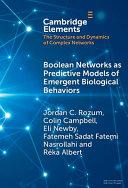
More products digital (pdf, epub, mobi) instant download maybe you interests ...
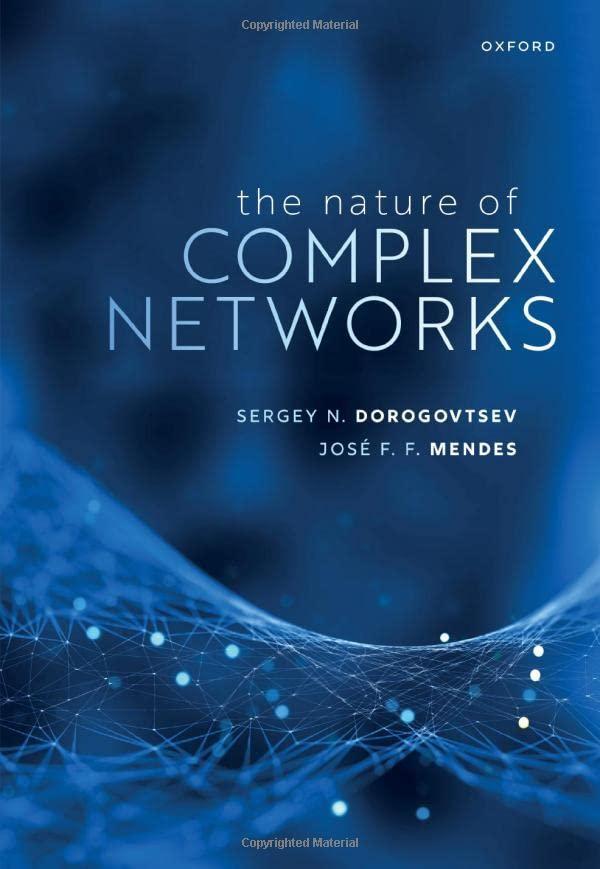
The Nature of Complex Networks Sergey N. Dorogovtsev
https://ebookmass.com/product/the-nature-of-complex-networkssergey-n-dorogovtsev/
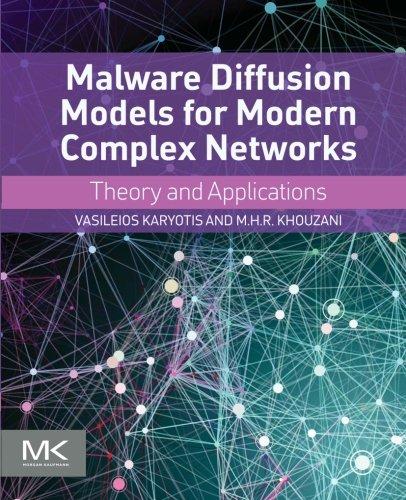
Malware Diffusion Models for Wireless Complex Networks. Theory and Applications 1st Edition Karyotis
https://ebookmass.com/product/malware-diffusion-models-forwireless-complex-networks-theory-and-applications-1st-editionkaryotis/

Multilayer Networks: Structure and Function Ginestra
Bianconi
https://ebookmass.com/product/multilayer-networks-structure-andfunction-ginestra-bianconi/
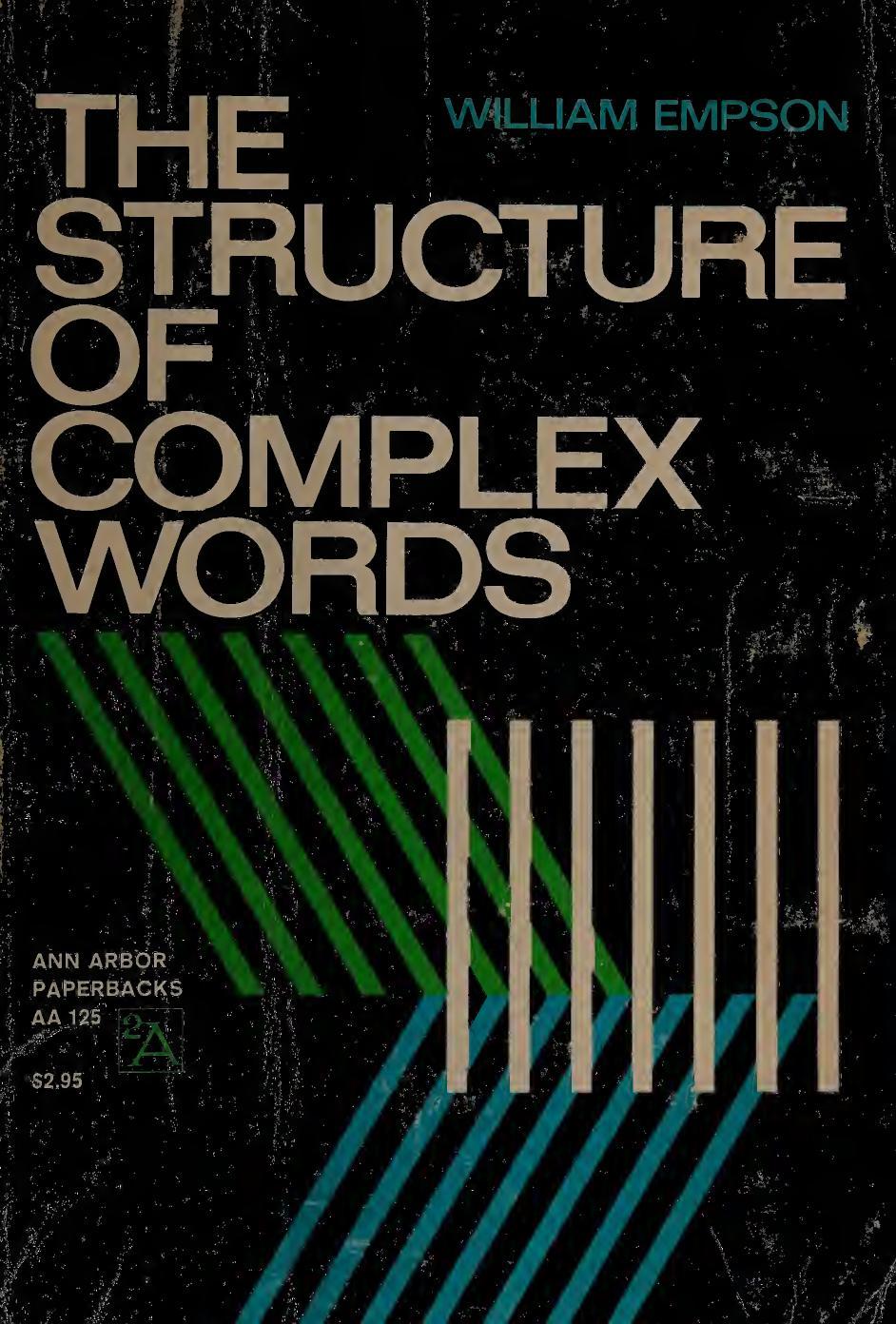
The Structure of Complex Words Empson
https://ebookmass.com/product/the-structure-of-complex-wordsempson/
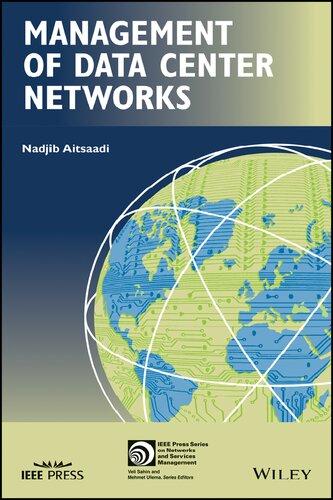
Management of Data Center Networks Nadjib Aitsaadi
https://ebookmass.com/product/management-of-data-center-networksnadjib-aitsaadi/
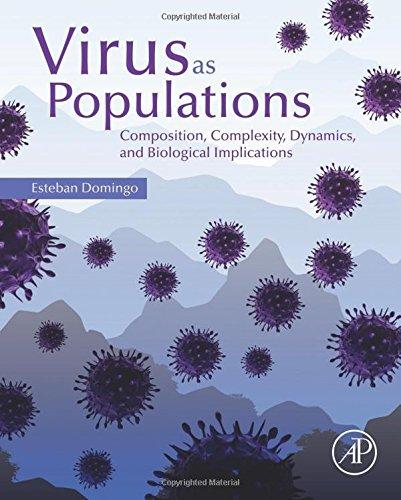
Virus as populations : composition, complexity, dynamics, and biological implications 1st Edition Domingo
https://ebookmass.com/product/virus-as-populations-compositioncomplexity-dynamics-and-biological-implications-1st-editiondomingo/

The Building of Chinese Ethnicity in Rome: Networks without Borders Violetta Ravagnoli
https://ebookmass.com/product/the-building-of-chinese-ethnicityin-rome-networks-without-borders-violetta-ravagnoli/

Social Media as a Space for Peace Education: The Pedagogic Potential of Online Networks M. Ayaz Naseem
https://ebookmass.com/product/social-media-as-a-space-for-peaceeducation-the-pedagogic-potential-of-online-networks-m-ayaznaseem/

Introduction to Modern Dynamics: Chaos, Networks, Space, and Time 2nd Edition David D. Nolte
https://ebookmass.com/product/introduction-to-modern-dynamicschaos-networks-space-and-time-2nd-edition-david-d-nolte-2/
The Structure and Dynamics of Complex Networks
Boolean Networks as Predictive Models of Emergent Biological Behaviors

Jordan C. Rozum, Colin Campbell, Eli Newby, Fatemeh Sadat Fatemi Nasrollahi and Réka Albert

ElementsintheStructureandDynamicsofComplexNetworks editedby GuidoCaldarelli
Ca’FoscariUniversityofVenice
BOOLEANNETWORKSAS PREDICTIVEMODELSOF
EMERGENTBIOLOGICAL BEHAVIORS
JordanC.Rozum
BinghamtonUniversity
ColinCampbell
UniversityofMountUnion
EliNewby
PennsylvaniaStateUniversity
FatemehSadatFatemiNasrollahi
IndianaUniversity
RékaAlbert
PennsylvaniaStateUniversity


ShaftesburyRoad,CambridgeCB28EA,UnitedKingdom OneLibertyPlaza,20thFloor,NewYork,NY10006,USA
477WilliamstownRoad,PortMelbourne,VIC3207,Australia 314–321,3rdFloor,Plot3,SplendorForum,JasolaDistrictCentre, NewDelhi–110025,India
103PenangRoad,#05–06/07,VisioncrestCommercial,Singapore238467
CambridgeUniversityPressispartofCambridgeUniversityPress&Assessment, adepartmentoftheUniversityofCambridge.
WesharetheUniversity’smissiontocontributetosocietythroughthepursuitof education,learningandresearchatthehighestinternationallevelsofexcellence.
www.cambridge.org
Informationonthistitle: www.cambridge.org/9781009478717
DOI: 10.1017/9781009292955
©JordanC.Rozum,ColinCampbell,EliNewby,FatemehSadatFatemiNasrollahi, andRékaAlbert2024
Thispublicationisincopyright.Subjecttostatutoryexceptionandtotheprovisions ofrelevantcollectivelicensingagreements,noreproductionofanypartmaytake placewithoutthewrittenpermissionofCambridgeUniversityPress&Assessment.
Whencitingthiswork,pleaseincludeareferencetotheDOI 10.1017/9781009292955
Firstpublished2024
AcataloguerecordforthispublicationisavailablefromtheBritishLibrary
ISBN978-1-009-47871-7Hardback
ISBN978-1-009-29296-2Paperback
ISSN2516-5763(online)
ISSN2516-5755(print)
CambridgeUniversityPress&Assessmenthasnoresponsibilityforthepersistence oraccuracyofURLsforexternalorthird-partyinternetwebsitesreferredtointhis publicationanddoesnotguaranteethatanycontentonsuchwebsitesis,orwill remain,accurateorappropriate.
ElementsintheStructureandDynamicsofComplexNetworks
DOI:10.1017/9781009292955
Firstpublishedonline:February2024
JordanC.Rozum
Binghamton University
ColinCampbell UniversityofMountUnion
EliNewby PennsylvaniaStateUniversity
FatemehSadatFatemiNasrollahi IndianaUniversity
RékaAlbert PennsylvaniaStateUniversity
Authorforcorrespondence: RékaAlbert, rza1@psu.edu
Abstract: Interactingbiologicalsystems atallorganizationallevelsdisplay emergentbehavior.Modelingthesesystemsismadechallengingbythe numberandvarietyofbiologicalcomponentsandinteractions–from moleculesingeneregulatorynetworkstospeciesinecologicalnetworks–andtheoften-incompletestateofsystemknowledge,suchasthe unknownvaluesofkineticparametersforbiochemicalreactions.Boolean networkshaveemergedasapowerfultoolformodelingthesesystems. ThisElementprovidesamethodologicaloverviewofBooleannetwork modelsofbiologicalsystems.Afterabriefintroduction,theauthors describetheprocessofbuilding,analyzing,andvalidatingaBoolean model.Theythenpresenttheuseofthemodeltomakepredictionsabout thesystem’sresponsetoperturbationsandabouthowtocontrolits behavior.TheElementemphasizestheinterplaybetweenstructuraland dynamicalpropertiesofBooleannetworksandillustratestheminthree casestudiesfromdisparatelevelsofbiologicalorganization.
Keywords: modelingbiologicalsystems,Booleannetworks,discretedynamic models,networkcontrol,phenotypecontrol
©JordanC.Rozum,ColinCampbell,EliNewby, FatemehSadatFatemiNasrollahi,andRékaAlbert2024
ISBNs:9781009478717(HB),9781009292962(PB),9781009292955(OC) ISSNs:2516-5763(online),2516-5755(print)
1TypesofBiologicalNetworks
Interactingsystemsaboundateverylevelofbiologicalorganization,from themoleculartothepopulationlevel.Forexample,molecularinteracting systemsconsistofgenes,theirtranscripts(mRNAs),proteins,andsmall molecules;theirinteractionsincludegenetranscription,proteintranslation, protein–proteininteractions,andchemicalreactions.Attheotherextreme, interactionsamonganimalsincludepredation,competition,andsymbiosis.
Afundamentalgoalofbiologyistounderstandwhybiologicalsystems behavethewaytheydo.Onepromisingavenuetowardthisgoalistostudyhow interactingbiologicalsystemsateachleveldeterminetheemergentbehaviorat thenextlevel.Emergencehasbeendefinedandstudiedinvariouscontexts (Hopfield, 1982; Crutchfield, 1994; KivelsonandKivelson, 2016; KoorehdavoudiandBogdan, 2016; Zheng, 2021);inthisElement,emergencerefers tothecollectivebehaviorsofsystemcomponentsthatarisefromtheirinteractionsinanontrivialway.Forexample,cellulardecisionsandphenotypesarise fromtheinteractionsofnumerousmolecularcomponents.Similarly,interactionsamongcellsdeterminehowmulti-cellularorganismsdevelopandhow tissuesandorgansfunction;interactionsamongindividualsformthebasisof socialcommunities;andinteractionsamongspeciesunderlieecologicalcommunities.However,noteveryinteractionplaysthesameroleindetermining thebehaviorofthesystemasawhole.
Anetworkrepresentationofasystemofcoupledelementscanbeaneffective toolforstudyinghowinteractionsgiverisetocollectivebehavior.Anetwork (orgraph)isamathematicalabstraction,consistingofnodes,whichrepresent differentelements,andedges,whichspecifythepairwiserelationshipsbetween theelements.Forexample,inmolecularnetworks,nodesrepresentgenes, RNA,proteins,andsmallmolecules;andedgesindicatereactions,interactions, andregulatoryrelationships.Theedgesofanetworkcanbesymmetrical(representingamutualrelationship)ordirected(representingmassorinformation flowfromasourcetoatarget).Edgescanalsohaveasign,representingpositive (activating)ornegative(inhibitory)influencesandrelationships.Forexample,apossiblenetworkrepresentationofinteractionsamongthemembersof microbialcommunitieswouldusedirectedandsignededgesinwhichthesign ofeachedgeindicateswhethertheinteractionisbeneficialordetrimentalto thesurvivalofthemicrobetowhichtheedgedirects.Anetworkrepresentation allowstheuseofgraphmeasurestocharacterizetheorganizationoftheinteractionsinbiologicalsystems,butdoesnotfullycapturethesystem’shigher-level emergentproperties.Asecondimportantsteptowardtheelucidationofhigherlevelemergentpropertiesisthemodelingofthepropagationofinformation
inthesenetworks(Rämöetal., 2007; Barros, 2009; HarushandBarzel, 2017; MaheshwariandAlbert, 2017).
2ModelingtheDynamicsofBiologicalNetworks
Eachelementofabiologicalinteractingsystem(representedasanodeinabiologicalnetwork)canbecharacterizedbyanabundanceoractivity.Forexample, amolecularspeciesischaracterizedbyanabundance(respectivelymeasuredas aconcentrationorcopynumber);andanionchannelisrepresentedbyanactivity(openorclosed).Aseachabundanceoractivitycanchangeintimeduetothe interactionsinthesystem,weneedadditionaldynamicalinformationtosupplementthestaticnetworkrepresentationandcapturethehigher-levelemergent propertiesofthesystem.Thisinformationisprovidedasadynamicmodel.
Inadynamicmodelonanetwork,eachnode, i,isassignedastatevariable Xi torepresentitsabundanceoractivity.Thetimevariationof Xi isdeterminedbyaregulatoryfunctionforthisvariable, fi,whoseinputscorrespond totheregulatorsofthenode i inthenetwork.Inthisway,information(realizedasastatechangeofanode)propagatesthroughthenetwork.Eachnode’s statewillevolveovertime,eventuallyconvergingintoalong-termbehaviorsuchasasteadystateorasustainedoscillation.Theemergentbehaviors ofthesystem(e.g.,thephenotypesofageneregulatorymodel)canthenbe characterizedbythesetofpossiblelong-termbehaviorsofallnodes,orofa relevantsubsetofnodes.Dynamicalmodelscanbeclassifiedintocontinuous ordiscretemodelsdependingonwhetherthestatevariablesarecontinuousor discrete.Choosingtherightdynamicalmodelingframeworkinvolvesstriking abalancebetweenmodelingdetailandscalabilitytolargesystemsizes.Other considerationsforchoosingamodelingframeworkincludethespecificsofthe systembeingmodeledandtheintendeduseofthemodel,aswewilldiscussin Section 4.
2.1ContinuousModeling
Therearemanytypesofcontinuousdynamicalmodels,butordinarydifferential equations(ODEs)arebyfarthemostcommon.InODEmodelsonnetworks, therateofchange(timederivative)ofeachnodestate Xi(t) isexpressedasa functionofvariablesinthebiologicalnetwork.Thepositiveinfluencesand regulatoryeffectsincorporatedinthenetworkcontributetopositiveterms in dXi dt ,andthenegativeinfluencesandregulatoryeffectscontributetonegativetermsordecreasethemagnitudeofpositiveterms.Continuousmodelsof molecularnetworksusuallyincludeanegativetermthatcorrespondstospontaneousdecayofthemolecule(due,forexample,todilutioneffectsduringcell
division);suchatermisusuallynotexplicitlyrepresentedasaself-edgein thenetwork.Ordinarydifferentialequationsaresuitedforwell-characterized systems,wherethemechanisticdetailsofeachinteractionareknownthrough collectingasufficientamountofquantitativeinformation(usuallythrough decadesofexperimentalwork).Elementarybiochemicalreactionsareusually describedusingmassactionkinetics,inwhichtherateofachemicalreaction isproportionaltotheconcentrationofthereactants.OtheroftenusedfunctionalformsareMichaelis–Mentenkinetics,accordingtowhichtherateof anenzyme-catalyzedreactiondependsontheconcentrationofthereactantas
KM+R ,andHillfunctions,whichgeneralizethelatterto Rh
h M+Rh .Eachofthese functionsrequiresextensiveparameterization,whichneedsdataofgoodquality andquantity.Thechallengesofparameterestimationforsystemswithknown regulatoryfunctionsarereviewedby Loskotetal. (2019).Duetoinsufficient experimentaldata,thestateofknowledgeinmanybiologicalsystemsisincompletetoanextentthatmakescontinuousmodelingverychallenging:inthese systemsnotallinteractionshavebeenestablished,andevenforknowncausal relationshipstheunderlyingmechanismsarenotknown.
Thisuncertaintyposesachallengeforcontinuousmodelingofthesesystems. Totacklethesechallengesinbiomolecularsystems,modelersoftenexploit parameterrobustnessintheODEsofinterest.Inthesesystems,long-term behaviorsoftendonotdependverystronglyontheprecisevalueofreaction ratesorotherkineticparameters;forexample,thisisawell-knownproperty ofthe Drosophila segmentpolaritynetwork(vonDassowetal., 2000; von DassowandOdell, 2002).Thisrobustnessiscloselyrelatedtothewaysin whichtheODEscanbediscretized,whichhasbeenexploredby Thomasand Kaufman,(2001a, 2001b).Morerecently,wehaveexaminedhowtheconnectionbetweendiscreteandcontinuousmodelscanbeexploitedinthesesystems (RozumandAlbert, 2018a, 2018b, 2019).Modelershavealsofoundsuccess indealingwiththechallengesofbiologicaluncertaintybyexploitingdynamicalconstraintsimposedbythenetworkofinteractionsforcontrollingODEs, asreviewedby LiuandBarabási (2016)and RozumandAlbert (2022).Foran introductiontocontinuousmodelinginbiology,wereferthereaderto Mackey etal. (2016).
2.2DiscreteModeling
Discretedynamicalmodelsusediscretevariablestorepresentlogiccategories ofnodeabundanceanddescribethefuturestateofeachnodeasafunctionof thecurrentstatesofitsregulators.Discretemodelsonlyrequirequalitativeor relativemeasurements(e.g.,informationthataproteinismuchmoreabundant
inoneenvironmentalconditioncomparedtoadifferentcondition).Asaresult, theyusenoorfewkineticparameters,andcangenerallyhandlelargernetworks thancontinuousmodels.Systemsinwhicheachvariablehasamulti-modaldistributionarebestsuitedfordiscretedynamicmodeling.Theoutputsofdiscrete modelscanbemademorecontinuousbyperformingensemblesofsimulations thatdifferintheinitialconditionorintheorderofevents(akintosimulatingapopulationofcells)andreportingensembleaveragesofeachvariable. Discretedynamicmodelshavebeenusedsuccessfullytodescribetheattractor repertoireofavarietyofbiologicalsystems,asreviewedby AlbertandThakar (2014), Abou–Jaoudéetal. (2016), Schwabetal. (2020),and Hemedanetal. (2022).Herewewillfocusonthesimplestdiscretedynamicmodel,theBooleanmodel.Thismodelusestwologiccategoriesofnodeabundance.Anytype ofmeasurementthatsortstheobservationsintotwocategoriescanbeusedto constructaBooleanmodel.Booleanmodelingismostappropriateifeachvariablehasabimodaldistributionorifthereexistsathresholdabundancethat mustbeexceededtoactivatethenode’sinteractions.Theprecisevalueofthis thresholdabundancedoesnotneedtobeknownbecauseitdoesnotenterthe dynamicmodel.Ifresearchquestionshingeonpreciseconcentrationsorhigh timeresolution(e.g.,todeterminedosingschedules),thenaBooleanmodel mightnotbeappropriate.
3BooleanModelingoftheDynamicsofBiologicalNetworks
InaBooleanmodel,eachentity i ischaracterizedbyavariable Xi thatcantake oneoftwovalues:1(“active”,or“ON”)or0(“inactive”,or“OFF”).Each variable Xi updatesitsvalueaccordingtotheoutputofanupdatefunction fi : {0, 1}N →{0, 1} (alsocalledaregulatoryfunction),whichequivalently mapseachcomponentofthesystemstate X = (Xi0,..., XiN 1) toeither1or0. Thismapcanbecommunicatedviaaso-calledtruthtable,inwhichtheoutput ofeverycombinationoffunctioninputvaluesislisted,thoughthisisoftennot efficient.Specificmodelsmayusedifferenttemplatesorrepresentationsforthe regulatoryfunctions,forexample,thresholdfunctionsactivateifaweighted sumofanode’sregulatorvariablesexceedsaspecifiedvalue.AnyBoolean functioncanbeexpressedalgebraicallyusinglogicaloperators(e.g.,“not,” “or,”“and”withsymbolicrepresentations ¬ , ∨,and ∧,respectively).Regulatoryfunctionsthatdonotdependontheregulatedvariablecontainanimplicit decay:iftheregulatoryfunctionmapsto0,thevariablewillbeupdatedtothe statezeroevenifcurrentlyitsvalueis1.
Thespecifictimingofwhentoupdateeachregulatoryfunctionalsohasan effectonthemodel.Thereareseveralschemesfordeterminingthetimingof
variableupdates.Inthesynchronousupdatescheme,allvariablesareevaluatedatonceineachdiscretetimestep.Thisupdateschemeisrealisticifthe durationsofsynthesisanddecayprocessesofeachelementarethesame,or whenexternalfactorsdrivesynchronizationofsystemelements.Forexample, thismaybethecaseforcertaingeneregulatorynetworks,asthetimescaleof genetranscriptionandmRNAdegradationissimilar,ontheorderofminutes (Alon, 2019)orinecologicalnetworkswhereseasonalvariationssynchronize populationgrowth.Incontrast,asynchronousupdateschemesallowdifferentnodestoupdatewithdifferentrates,whichisnecessaryfornetworksthat includemultipletimescales.Therearemanywaystoimplementanasynchronousupdate.Somearedeterministic,forexampleupdatingnodesaccordingto afixedorder;othersarestochastic,forexampleincludingapropensityfora variabletoretainitscurrentvalue.Intherandomorderasynchronousupdate scheme,allnodesareupdatedonceperroundinarandomlyselectedorder. Unlessexplicitlynotedotherwise,weusethestochasticasynchronousupdate scheme,inwhichateachstepasinglevariableisrandomlychosentoupdate itsvalue(eachvariablemusthaveanonzeroupdateprobability;theseareoften chosentobeuniform).Comparedwithotherupdatingschemes,thisscheme removesspuriousoscillationsthatarisefromunrealisticperfectsynchrony,but otherwisepreserveslong-termbehaviors(Saadatpouretal., 2010).Oncethe updatefunctionsaredeterminedandanupdateschemeisselected,theBoolean systemisfullyspecified.
EverytrajectoryofaBooleanmodelultimatelyconvergesintoarecurrent stateorgroupofstates,calledanattractor.Attractorsaredividedintotwotypes: pointattractors(alsocalledfixedpointsorsteadystates),whichcontainonly onestate,andcomplexattractors,whichcontainmorethanonestate.Ingeneral,whenusingastochasticupdatingscheme,theorderinwhichthemultiple statesofacomplexattractorarevisitedisnotfixed.Theattractorsofmodels ofbiologicalsystemscorrespondtostablebiologicalbehaviors,suchasphenotypesinbiomolecularmodelsorstablecommunitiesinecologicalnetworks. Forexample,theattractorsofamolecularinteractionnetworkmaycorrespond tocelltypesandcellularbehaviors(suchasthecellcycle).
ThestudyofBooleanmodelsofbiologicalnetworksbeganwiththeworkof StuartKauffmannandRenéThomasinthelate1960s.RenéThomasformulatedBooleanandmoregenerallogicalmodelsofgeneregulatorynetworks,for examplethenetworkunderlyingthedevelopmentofbacteriophage(Thomas, 1973).StuartKauffmannintroducedthestudyofensemblesofsyntheticBooleanmodelstoevaluatetheexpectedpropertiesofgeneregulatorynetworks (Kauffman, 1969);theseensembleshavebeenusedfruitfullyeversinceto obtaininsightintotheattractorrepertoireofbiologicalsystems.Theveryfirst
models(theso-calledNKmodels)hadaregularnetworkstructureinwhich eachof N nodeshasafixednumberofregulators K,andeachBooleanupdate functionwasconstructedbyselectinganoutcomewithafixedbiastoward1, p,foreachcombinationofvaluesofthe K regulators.(Usually,thisincludes functionsthathavefullyredundantinputs,sothenumberofregulatorscan effectivelybelessthan K.)Overtime,improvedunderstandingofthestructureofbiologicalnetworkshasdriventheuseofmoreheterogeneoussynthetic networks,forexamplenetworksthatuseaprescribedlong-taileddegreedistribution(AldanaandCluzel, 2003).Inaddition,carefulstudyoftheprinciples ofbiologicalregulationledtothenarrowingofthepoolofBooleanupdate functions(Harrisetal., 2002).Astherearenoorveryfewexamplesinwhicha regulatorhasapositiveeffectinonecontextandanegativeeffectinanother,the updatefunctionsshouldbelocallymonotonicfunctions(Raeymaekers, 2002). Thereisincreasingevidencethattheinputstothefunctionformahierarchy intermsofdeterminingtheoutput:acertainvalueofoneoftheinputsdeterminestheoutput,otherwisethecombinationofcertainvaluesoftwoinputs determinesadifferentvalueoftheoutput,andsoon(Subbaroyanetal., 2022). Suchfunctionsarecallednestedcanalizingfunctions(Jarrahetal., 2007).In thefollowing,wewillfocusonBooleanmodelsofspecificbiologicalsystems. Foranexcellent,recentreviewoftheuseofBooleanmodelensembleswerefer thereaderto BornholdtandKauffman (2019).
4HowtoBuildandValidateaBooleanNetworkModel ofaSpecificBiologicalSystem
Likeanymodel,aBooleannetworkmodelisonlyvalidinsofarasitcapturesthe essentialstructureandbehavioroftherealsystembeingmodeled,anditisonly usefulinsofarasitfacilitatesmeaningfulinsightintothebehaviorofthesystem.Agoodmodelhasbothexplanatoryandpredictivepowers.Itidentifiesthe rootcauseofcertainoutcomes,forexample,itidentifieswhichelementsplay akeyroleindeterminingacertainattractor.Italsoanswers“whatif?”questionsbyidentifyingtheoutcomeofsituationsthatwerenotpreviouslystudied. InthecontextofBooleannetworks,suchexplanationsandpredictionsoften comefromtheanalysisofinterventions,wheretheeffectofmodifyingupdate functionsand/orfixingnodesintotheONorOFFstate(temporarilyorpermanently)isdetermined.Adecidingfactorinchoosingtheresolutionorscopeof themodelistheexpectedvalueoftheresultsofthisperturbationanalysis.Simplyput,ifanodeisnotincludedinthemodel,thenthemodelcannotpredict whathappenswhenthenode(and/oritsupdatefunction)isperturbed.
Withthisendgoalinmind,thekeyfeaturesofaBooleanmodelofaspecific systemcanbedeterminedbyconsideringthefollowingquestions:
1. Whatshouldthenodesandedgesrepresent? Whilethisisoftenselfevidentfromcontext,subtletiesexist.Forinstance,inaprotein–protein interactionnetwork,achain A → B → C mayindicatethatprotein A has someinfluenceonprotein B,whichinturnhassomeinfluenceonprotein C.If,however,protein B hasnootherinteractionsinthenetwork,itisoften convenienttosimplifythenetworkbyremovingnode B andconnecting A to C directly: A → C.Thus,theedgefrom A to C implicitlyincorporatesprotein B,makingthedistinctionbetweenanodeandedgemuddied.Moreover, directlyconnecting A and C canimpactnetworkdynamics,forinstanceby changingtheconvergencetimeintoanattractor,orinrarecasesevenchangingtheattractors(Naldietal., 2011, 2022).Ingeneral,caremustbetakento identifywhatnodesandedgesrepresent,bothforthesakeofmethodological clarityandwheninterpretingmodelbehavior.
2. Howarethenodesandedgesidentified? Ideally,empiricaldataonthe specificsystemisusedfornetworkconstruction.Thedatamightbefrom directobservation(forinstance,animal–plantinteractionsinecologicalsystems),experiments(e.g.,knockingoutageneandobservingtheeffects onothergeneproducts),orfromliteraturereview.Usually,theprocessof generatinganetworkfromthedataisnotstraightforward.Forinstance, animal–plantinteractionswilloccurwithvaryingfrequencies,soamodelerisrequiredtoeither(a)chooseacutoffbelowwhichanedgeis not addedtothenetworkor(b)workinamodelingframeworkwhereedges carryweights.Additionally,perturbationexperimentsyieldcausaleffects thatmaynotcorrespondtodirectinteractionsbuttochainsofsuchinteractions;seeminglyindependenteffectsmayinfactsharemediators(Lietal., 2006; Maheshwarietal., 2022).Anincreasingnumberofmethodsandtools existtogeneratenetworksfromlargecompilationsofexperiments(Muñoz etal.,2018;Razzaqetal.,2018).Forexample,generegulatorynetworkscan beinferredfromgeneexpression(transcriptomic)datausingstatisticalor information-theoreticapproaches,asreviewedby Saint-AntoineandSingh (2020).Brainnetworkscanbeinferredfromneuronalrecordingsbasedon statisticalormodel-basedmethods,asreviewedby MagransdeAbriletal. (2018).Ifthereisn’tsufficientempiricalinformationtoconstructaspecific networkmodel,syntheticmodelsgeneratedaccordingtovariousalgorithms canalsobringinsight.
3. HowwillsystemconfigurationsbeabstractedintoaBooleanframework? Dynamicquantitiesassociatedwithanodeareoftenimplicitinthe
choiceofnodes(e.g.,concentrationsformolecularspecies).Incaseswhere thequantityisnotinherentlyBoolean,themodelermustinterprettheviabilityandmeaningofaBooleanframework.Thebinarizationofacontinuous variableisusuallydonebyimposingathreshold;below-thresholdvaluesare interpretedastheBoolean0andabove-thresholdvaluesareinterpretedas 1.Inothercases,differentialanalysis(e.g.,findingthatageneisexpressed muchmorehighlyinonecontextcomparedtoanothercontext)isthebasis ofthebinarization(Pandeyetal., 2010).
4. Howwilltheupdatefunctionsbedetermined? TheBooleanupdatefunctionofeachnodeincludesthenode’sregulators(thestartingpointsofedges incidentonthenode)asinputs,andshouldrespectthepositiveornegative natureoftheregulationifitssignisknown.Thereusuallyaremultiplepossibilitiesconsistentwiththenetwork,whicharedistinguishedintheway theeffectsofmultipleregulatorsareaggregated,forexample,whethertwo activatorsactindependentlyorsynergistically.Empiricalinformationonthe outcomeofthefunctionincasesofgiveninputcombinationscanbeused tofindthebestchoice,ornarrowthepossibilities.Thiscanbeautomatedto someextent(Muñozetal., 2018; Razzaqetal., 2018; Wootenetal., 2019). Intheabsenceofconcreteinformation,observedgeneralprinciplesofbiologicalregulatoryfunctionscanalsobeusedtonarrowthepossibilities.As discussedinSections 2 and 3,manyapproachesexisttoexpresstheBooleanupdatefunctions,includinglogicalstatements(e.g., fA = B ∧ C)that aremostusefullyexpressedindisjunctivenormalform,andthresholdrules, whereedgescarryanumericalscoreandanode’sstatedependsonthesum ofincomingedgeweights.Thechoiceishighlycontext-dependent;logicalmodelsareappropriatewheredifferentcombinationsofinputscanlead tovastlydifferentbehavior,asisoftenthecaseinbiomolecularnetworks, whilethresholdrulesareappropriatewhenanode’sbehaviordependson theextenttowhichaninteractionoccursandnotdirectlyonwhatother nodecausedtheinteraction(e.g.,predationinfoodwebs).Notethatevery thresholdBooleanfunctioncanbeexpressedasalogicalequation,butthe reverseisnotalwaystrue.
5. Whatisthemostappropriateimplementationoftime? Thestochastic asynchronousupdateisappropriateinmanycases,especiallywhentherates ofspecificinteractionsareunknown.Otherchoicesmaybeappropriateif, forinstance,interactionrates are wellknown.Sometimes,thesynchronous updatemaybepreferredbecauseitgenerallyleadstofasterconvergence timeandeasierimplementationofbrute-forceattractoridentification,or becauseitenablestheuseofconvenientmathematicaltools.Itcanalso beappropriatewhenexternalfactorsdrivesynchronizationinthesystem,
forexample,whenconsideringseasonalorannualfactorsinecological models.
6. Howisthemodeltobevalidated? Theanswertothisquestiondependson theavailableinformationaboutthesystembeingmodeled.Generallyspeaking,thestaticnetwork(whatarethenodes,andwhichnodesinteract)should bevalidatedfirsttomakethesuccessofthedynamicmodel(how thenodes interact)morelikely.Thevalidationofthenetworkentailsgeneralconsiderations(doesthemodelnetworkhavearealisticstructure,asmeasuredby anynumberofstandardorsystem-specificmetrics?)andverificationofspecificedges.Thevalidationofthedynamicmodelisdonebyverifyingthatit capturesexpected/knownbehavior,forexample,itsattractorscorrespondto knownphenotypes.Ifthereisagreementforcertainphenotypesbutnotfor others,thediscrepancycansometimesberesolvedbymakingasmallchange tothestaticnetwork(e.g.,assumeaconnectionbetweentwopreviouslydisconnectednodes).Thisyieldsnewhypothesesandtestablepredictions;for example,apreviouslyundiscoveredinhibitoryedgeinaplantsignalingnetworkwaspredictedinthiswayandwasvalidatedexperimentally(Albert etal., 2017; Maheshwarietal., 2019).
7. Whatistheintendedpredictivepowerofthemodel? Thatis,whatisits intendeduse?Thisishighlycontext-dependentand,asmentionedabove, feedsintotheinitialdesignofthemodel.Inanidealscenario,themodel makesmeaningfulandtestablepredictions.Forexample,themodelmay indicatethephenotyperepertoireofthesystemandpredicthowitchangesin responsetointerventions.Empiricaltestingofthepredictionsprovidesadditionalvalidationoropportunitiestorefineandimprovethemodel.Ideally, modelpredictionscanbeusedtoidentifyandprioritizetherapeuticstrategiesthateliminatepathologicalphenotypesanddrivethesystemtoward desiredphenotypes.
Therearemanycomputationaltoolsandanalyticaltechniquesdeveloped fortheanalysisofBooleannetworks.Insubsequentsections,wewilldiscuss severalofthesetechniquesinmoredetail.GeneralpurposeBooleananalysis softwareincludesGinSim(Naldietal., 2018a),CANA(Correiaetal., 2018), andpystablemotifs(Rozumetal., 2022).Manysoftwaretoolsareavailablein theCoLoMoTorepositoryofBooleananalysisPythonlibraries(Naldietal., 2018b).
5CaseStudyBooleanSystems
InthissectionwediscusstheformationofspecificBooleanmodelsunderthe frameworkoutlinedintheprevioussection.Weoutlineconsiderationstaken
intheconstructionofthesemodels,aswellastheprocessesbywhichthey werevalidated.Generally,theriskofover-parameterizationismuchsmallerin BooleanmodelsthanforODEorPDEmodels.Nevertheless,theaccuracyand appropriatenessofaBooleanmodelmustbecarefullyevaluatedbycomparing withacompendiumofexperimentalorobservationalresults.
5.1APlant–PollinatorModelEnsemble
Plant–pollinatorinteractionsarecruciallyimportantcomponentsofecosystem stabilityingeneralandcroppollinationinparticular.Empiricalplant–pollinator networkscanbebuilt,forexample,throughreal-timeobservationofpollinator–plantvisitation(Memmott, 1999)and/ortrappingpollinatorsthatvisitparticularspeciesofplants(Russoetal., 2019).Preciselybecausetheyareempirical, suchnetworksareimmenselyvaluablewhenbuildingandbenchmarkingsimulatedplant–pollinatornetworks.However,collectinghigh-qualitydataisvery time-consumingandproperidentificationofinteractingspeciesrequiresahigh levelofexpertise.Amodelcapableofgeneratingrealisticecologicalnetworks isthereforeappealing,inpartbecauseoftheabilitytogenerateandstatisticallyanalyzemanysuchnetworks(e.g.,todeterminethenetworkproperties thatincreasethelikelihoodthatthecommunitywillcollapseduetothelossof oneorafewspecies).
TheseconsiderationsmotivatedthedevelopmentofthebipartiteBoolean modelby Campbelletal. (2011).ThemodelisBooleaninsofaraseachspecies (i.e.,node) Xi isassumedtobeeitherpresent(1)orabsent(0)inacommunity ofinterestateachtimestep t.Plant–pollinatorinteractionsareeithermutuallybeneficial(pollinatorsfeedfromtheplantsandplantsarepollinatedbythe pollinators)orbeneficialforonespeciesandwastefulfortheother(pollinators spreadthepollenbutcannotfeedfromthenectarorpollinatorscanacquirenectarwithoutspreadingpollen).Mutuallybeneficialinteractionsarerepresented byapairofpositiveedgesconnectingeachspeciestotheother,whileone-sided interactionsarerepresentedbyapositiveedgetothespeciesthatbenefitsand anegativeedgetothespeciesforwhichtheinteractioniswasteful.Withinthe model,allspeciesareassumedtopersistinaso-called regionalspeciespool surroundingacommunityofinterest.Thecompositionofspeciesinacommunityofinterestchangesinasynchronousupdateschemesuchthatspecies enter(fromtheregionalspeciespool)orremaininthecommunityattime t + 1 iftheirinteractionswiththespeciesinthecommunityattime t arefavorable (i.e.,ifplantsareabletobepollinatedbyspeciesalreadyinthecommunityand ifpollinatorshavesufficientfoodsources).
5.1.1BuildingtheModel
Thechoiceofrepresentingthesystemwithanetworkcomprisingspecies (i.e.,plantsandpollinators)asnodesandtheirinteractions(i.e.,pollination) asedgesfollowsnaturallyfromconsideringthesystem;thechoicetorepresentthesystemasa bipartite networkfollowsfromthefactthatplant–plant andpollinator–pollinatorinteractionsarelargelyirrelevantwhenconsidering pollinationandpollinatorfeeding(Bascompteetal., 2003).
Oncethechoicetomodelthesystemusinganetworkapproachismade,the nextdecisiontomakeishowtocreateandcharacterizethenodesandedges: Howmanyofeachtypeshouldexistintheregionalspeciespool,whichnode pairs Xi and Xj shouldinteractandwhichshouldnot?Aplant-to-polinator ratioof1:3waschosentomatchempiricalobservations(Campbelletal., 2011, 2022).Themodelsimilarlydrawsfromempiricalvalueswhengeneratingedges:anexponentiallycutoffpowerlawfittedtoempiricaldataisused todeterminethedegreedistribution.
Theseinteractionsareultimatelyusedtodetermine,atagiventimestep,the Booleanstatevariableassociatedwitheachnode,whichcorrespondstothe relativeabundanceofthatspeciesinthecommunity.Weemphasizethatifa variableisinthe0state,itdoesnotnecessarilyimplythat no membersofthe correspondingspeciesexistinthecommunity.Rather,itimpliesthatthereare toofewmembersofthatspeciesfortheirinteractionstohaveanappreciable impactontheabundanceofotherspecies.
Indeed,theeffectofeachinteractionisdeterminedbyaspecies-specific characteristicthatisalsoassignedrandomlyaccordingtoempirical(skewnormal)distributions:pollinatorsareassigneda corolladepth andpollinatorsa proboscislength.Aclosematch(inpractice, ≤10% difference)resultsina mutuallybeneficialinteraction;otherwise,theinteractionisbeneficialonlyfor thespecieswiththelongercharacteristiclength.Therationaleisthatapollinatormustreachintothecorollatofeed(whichitcandowithasufficiently longproboscis),whileaplantneedsthepollinatortolandonitforpollination tooccur(whichthepollinatorwilldounlesstheproboscisissolongthelandingisnotnecessary).Note,however,thatthisframeworkdoesnottakeinto accounteffectssuchasverysmallpollinatorscrawlingorburrowingintothe corolla.
Withthisframeworkinmind,thedynamicstatevariableofanode Xi attime t isgivenby
Figure1 Exampleplant–pollinatornetwork.Thisnetworkconsistsof10 plantspecies(labeledwith“pl”)and10pollinatorspecies(labeledwith“po”). Eacharrowendinginasolidcircledenotesabeneficialeffectonthetarget species,andeachendinginahollowcirclerepresentsadetrimentaleffecton thetargetspecies.Mutuallybeneficialinteractions(theedgesthatarepositive onbothends)areshownwithblue;edgesthatarebeneficialtoonespeciesbut detrimentaltotheotherareshowninpurple.PanelAshowsthespeciespool inwhichallspeciesareincluded.PanelBdemonstratesthatsomeofthese species(theoneswithgreybackground)donotreceiveenoughbeneficial influenceandhencecannotestablishaccordingtoEquation(5.1).According toEquation(5.1)thefuturestateofthespeciesthathaveatleastonepositive regulatorandthreeorfewernegativeregulators(e.g.,nodepl7)onlydepends ontheirpositiveregulator(s).Thisleadstotheeliminationofallnegative edgesinpanelB,leavingunidirectionaledgesshowningreen.
where Eji ∈{−1, 0, 4} indicatesadetrimental( 1),beneficial(+4),ornonexistent(0;i.e.,noedge)interactionfromnode j tonode i.Inotherwords,a species i persistsinorcolonizesthecommunityofinterestattime t + 1ifthe speciesinthecommunityattime t haveanetpositiveimpactonspecies i.The choiceofnumericalvaluesismadeintheabsenceofclearempiricaldatabut reflectsthefactthatabeneficialinteraction(successfulfeedingorvisitationby aviablepollinator)substantiallyoutweighstheeffectofnegativeinteractions (e.g.,wastedtimeandenergyunsuccessfullyattemptingtofeedfromaplant).
Anexamplefromtheensemblesof Campbelletal. (2011)isprovidedinFigure 1.Thisnetworkconsistsof10plantand10pollinatornodes.Thebeneficial interactionsareshownusingarrowswithsolidblackcircleswhiletheedges thatrepresentdetrimentalinteractionsendinhollowcircles.
Thechoicetoimplementasynchronousupdateschemereflectsaunified (andsimplified)frameworkwherespeciestendtoemerge,forinstance,atthe
beginningofayear/season,andthelossofsomespeciesmaynotbefullyrealizeduntiltheendofayear/season.Whilethisframeworkignoresintra-seasonal dynamics(e.g., Russoetal. [2013]),itisperhapsappropriategiventheprior modelingchoicetorepresentspeciesinaBooleanframework,whichalready flattensdynamicvariationsinpopulationnumber.
AnalysisofEquation(5.1)revealsseveralimplicationsofecologicalsignificance:
1.Aspeciesthatdoesnotreceiveanybeneficialinfluencefromthespecies poolisnotabletoestablish.Anexampleofsuchspeciesisnodepl6 in Figure 1.Anyotherspecieswhosesolepositiveinfluenceisfromsucha transientspeciesisalsounabletopersist(seenodepo8 andpl10).Thenodes thatrepresentthespeciesthatareunabletopersistarehighlightedwithgrey inFigure 1B.
2.Ifaspeciesreceivesatleastonepositiveinfluenceandthreeorfewernegativeinfluencesfromthecommunity,itsfuturestateonlydependsonthe currentstateofitspositiveregulator(s).Asaresult,thenegativeedges becomeirrelevantandthenetworkrepresentingthecommunitysimplifies further.Forinstance,allthenegativeedgesincomingtonodepl7 havebeen removedinthesimplifiednetworkshowninFigure 1B.
Theseobservationsleadtoamuchsimplernetwork,whichshowsthatonly afractionoftheoriginalspeciespoolhastheopportunitytoestablishand persistinthecommunity.TheresultantsimplifiednetworkisshowninFigure 1B,inwhichtheisolatednodeshighlightedwithgreyrepresentthespecies thatcannotestablish,andthesuperfluousnegativeedgesareremoved.These simplificationsreducethenetworkfrom20nodesand38edgesto11nodesand 15edgeswithoutchangingthedynamics.
5.1.2ModelValidationandApplications
Theattractorsofthemodelcorrespondtostablecommunities:thenodeswhose statevariablesintheattractorarenotfixedinthestate0arepartofthecommunity.Thestablecommunitycontainsasubsetoftheoriginalbipartitenetwork. Thepropertiesofthesenetworksubsetscanbemeasured(Campbelletal., 2011);similaritiestoempiricalnetworkslendconfidencetothepredictive powerofthemodel.Forexample,manyrealplant–pollinatorcommunitiescontaingeneralists(speciesthatinteractwithmanyotherspecies)andspecialists (speciesthatinteractwithfewotherspecies)inaso-called nested structure wherespecialistsprimarilyinteractwithgeneralists(Bascompteetal., 2003). Whilehighnestednesswascommonlyheldtopromotestability,themodel
suggestedthatanoverrelianceonnestednessmadethecommunityparticularlysusceptibletocollapseifcertaingeneralistspecieswereremovedfrom thecommunity(Campbelletal., 2012).Theimplicationisthathighnestedness cannegativelyimpactstability,asalsoarguedbyothers(AllesinaandTang, 2012; Staniczenkoetal., 2013).
Themodelrecapitulatesfieldobservationsinthecaseofperturbationof plant–pollinatorcommunities.Forexample,ameta-analysisby Vilàetal. (2011)revealedthattheinvasionofalienplantsintoanestablishedcommunity causedaconsiderabledecreaseinnativeplantandanimalspeciesabundance. Thesamebehaviorisobservedinthismodel:invasiveplantspeciesthatattract pollinatorsusingmimicrywhilenotprovidingfoodforthemaddnegative interactionstothesystemandpreventtheformationofstablegroupsofspecies,resultingindecreasedspeciesrichnessandabundanceinthecommunity. Themodelalsocapturestheextinctioncascadefollowingtheextinctionof generalistspecies(Biellaetal., 2020).
Themodelpredictshowcommunitiesrestabilizeaftertheintroductionor lossofspecies.Somenotablefindingsincludethefollowing:
1.Themodelcapturestheabilityofsomespeciestoreinvadethecommunity fromtheregionalspeciespooliftheyareonlyremovedfromthecommunity ofinterest,andpredictsthattheextenttowhichthetargetedspeciesbehaves asageneralistinthehostcommunityisanimportantpredictorofthelongtermeffectofitsremovalfromthelocalcommunity(LaBaretal., 2013).
2.Inthecontextofrestoringcommunitiesthathavesufferedapartialcollapseduetospeciesloss,themodelpredictsthattheintroductionofmultiple generalistspeciescanhelptorestorebiodiversity,thoughtheresultingcommunitymaybeverydifferentfromtheoriginalcommunity(LaBaretal., 2014).
3.Themodelsuggeststhatthephysicalcharacteristicsofaninvasivespecies (e.g.,proboscislengthforaninvasivepollinator)candrivequalitativelydifferentecologicalresponsesdependingonwhethertheyare typical versus atypical ofnativespecies(Campbelletal.,2015).Italsopredictsthatgroups ofspeciesthatsimultaneouslyinvadecanhavedrasticallydifferentimpacts onthehostcommunitiesiftheinvadersarerandomlyselectedcomparedto whentheyconstituteaseparatestablecommunity(Campbelletal., 2022).
4.Themodelpredictsthemagnitudeofcascadingextinctionsandsignificant damagesinplant–pollinatorcommunities.Italsosuggestseffectivemitigationmeasurestoprotecttheenvironmentagainstthethreatofspeciesextinctionandidentifiesfruitfulcommunityrestorationstrategies(FatemiNasrollahietal., 2023).
5.2BooleanModelsofSignalTransductionNetworks
OurnextcasestudieswillbetwoBooleanmodelsofsignaltransductionnetworksthatdeterminecellphenotypes.Bothmodelswereconstructedviathe integrationofexperimentalevidenceavailableintheliterature.Thefirststep inthisconstructionprocessistodecidewhatnodestoincludeinthenetwork. Sincebothnetworksfocusonanidentifiablephenotype,theknownmarkers ordeterminantsofthisphenotypeareincludedasnodes.Theknownsignals (externalmolecules)thatinduceoraffectthephenotypearealsoincludedand indicatenaturalinputs(sourcenodes)tothenetwork.Eachofthetwonetworks integratestheinteractionsandregulatoryrelationshipsamongtheirnodesas directedandsignededges.Bothnetworksincludeanabstractsinknodein thenetworkasamarkerofthephenotype(althoughthedynamicmodelwill characterizethephenotypeinmoredetail,includingthestateofothernodes). Eachnetworkischeckedforconsistencywithknowninformation.Forexample,everynodethatisknowntoaffectthephenotypeinapositiveornegative wayshouldhaveapositiveornegativepath,respectively,tothephenotype markernode.
Thenextstepistodeterminetheregulatoryfunctions;thisisalsoinformed byexperimentalresultsthatidentifyinteractionsandcausaleffects.Whenthere aremultipleregulatorsforanode,themodelerselectsthefunctionthatbestrepresentstheexistingknowledgeabouttheregulatoryaction.TheORfunctionis usedifthenodecanbeactivatedbyanyofitsregulators.TheANDfunction isusedifthenodeneedsallofitsregulatorstobeactivated.IfaBooleanregulatoryfunctioninvolvingseveralregulatorscannotbefullydetermined,one needstotakeanexploratoryapproachtoselectthefunctionthatcansuccessfullyreproducetheexistingexperimentalresults(bothatthenodeandatthe wholenetworklevel).
Bothmodelsunderwentanextensiveverificationprocessinwhichmodel dynamicswerecomparedtoexperimentalresultsandknownbiologicalinformation.Incaseswhenoneofthemodelsdidnotrecapitulateanexperimental observation(e.g.,thereductionofthelevelofaproteinwhenagenewas knockedout),themodelersscrutinizedtheliteraturefurtherandidentifiedpossiblechangestotheregulatoryfunctionsortotheinteractionnetworkthat wereconsistentwiththeliteratureandhelpedalignthemodelwiththeexperiments.Themodelsvalidatedbythisprocesswerethenusedtomakenovel predictionsofthecellphenotypeincasesthatwerenotstudiedexperimentally. Asbothofthesemodelsconcernpathologicalphenotypes,thepredictionsof mostinterestaretherapeuticinterventionsthatwouldeliminatethepathological phenotype.
5.2.1TCellLargeGranularLymphocyteLeukemiaModel Tcelllargegranularlymphocyte(T-LGL)leukemiaisararebloodcancer.The T-LGLmodelofZhangandcollaborators(Zhangetal., 2008)aimstocapture theoriginofthisdisease,whichisthesurvivalandproliferationofcytotoxic Tcells.CytotoxicTcellsaregeneratedtofightamicrobialinfectionbyeliminatinginfectedcells,andaftertheinfectionisclearedtheyusuallyundergo theprocessofactivation-inducedcelldeath(apoptosis).Throughanextensive literaturesearch,Zhangetal.synthesizedthenodes,interactions,andpathwaysinvolvedinactivation-inducedcelldeath,incellproliferation,aswell asthepathwaysthatwereatthetimeknowntobedifferentinT-LGLcells comparedtonormalcytotoxicTcells(seeFigure 2).The58nodesofthenetworkincludeproteins,mRNAs,andsmallmolecules,aswellasthephenotype markernodes“Cytoskeletonsignaling,”“Proliferation,”and“Apoptosis.”The networkincludesthreesignals:Stimuli,whichrepresentstheinitialstimulationofthecytotoxicTcellthatyieldsitsactivation,theimmunesignaling moleculeinterleukin-15(IL15),andplatelet-derivedgrowthfactor(PDGF). Theselattertwosignalswerefoundtohaveahighabundanceintheblood ofT-LGLpatients.The123edgesrepresenttranscriptionanditsregulation, protein–proteininteractions,andchemicalreactions.
TheT-LGLBooleanmodelofcytotoxicTcellapoptosisincorporated literature-derivedregulatoryfunctions.Asthenode“Apoptosis”representsthe deathofthecell,Zhangetal.assumedthatApoptosisinhibitseveryothernode, thusitsactivationleadstoastateinwhichApoptosisison(active)andevery othernodeisoff(inactive).TheseinhibitoryedgesbeginningattheApoptosisnodewereeffectivelymadeimplicitinfollow-upstudies(Zañudoand Albert,2015),whichremovedtheseedgesfromthemodelbutconsideredevery stateinwhichthenodeApoptosisisONasequivalentapoptoticstates.Followingthisconvention,wedonotdepicttheseedgesinFigure 2.Themodel wasusedtosimulatethesystem’strajectoriesstartingfromaninitialstatethat describesarecentlystimulatedTcell.Astherewasverylittleinformationon thetimingofevents,thesimulationsusedstochastictiming,specificallyrandomorderupdate,andtheresultsofhundredsofsimulationsweresummarized intoafrequencyofnodeactivation.Thesinglerestrictionontheupdateorder wasthatthephenotypenode“Apoptosis”wasupdatedfirst,thustheroundof updatethatstartedwithApoptosisturningonendedbyconvergenceintoapoint attractorinwhicheveryothernodewasoff.Themodelhasanadditionalattractor,namely,apointattractorinwhichApoptosisisoff;convergenceintothis attractorsignifiesthesurvivalofthecell,whichisanabnormalbehaviorinthe modeledcontext.Themodelreproducestheexperimentallyobservedsurvival ofasubsetoftheinitialstimulatedcellsandtheknownmarkersofthisprocess,
Figure2 InteractiongraphoftheT-LGLmodel(Zhangetal., 2008).Thesourcenodesthatrepresentexternalsignalsareshowningreen, thesourcenodesthatrepresentacellularcontextarelightgreen,andthethreesinknodesthatrepresentphenotypemarkersarepurple.The Apoptosisnodeimplicitlyinhibitsallothernodesinthenetworkbecauseitindicatescelldeath.
forexampletheactivationofJAKineverysurvivingcell.Themodelpredicts thatasmallsubsetoftheknowndysregulations(abnormalnodestatesinTLGL)issufficienttocausealltheothers,thuspreventativeeffortsshouldfocus onthissubset.ThemodelpredictstheT-LGLstateof12additionalnodesthat werenotassayedexperimentally.Themodelalsopredictsseveralkeynodes whosestatechangecanensurethattheentirecellpopulationundergoesapoptosis;thesekeynodesarepotentialtherapeutictargetsforT-LGLleukemia. Severalofthesepredictions,suchastheapoptosis-inducingeffectsofinhibitingPDGF,NFκB,orS1P,havebeenverifiedexperimentally(Zhangetal., 2008; Saadatpouretal., 2011).
5.2.2EpithelialtoMesenchymalTransitionModel
Epithelialcells,examplesofwhichincludeskincellsandcellsinthelining ofinternalorgans,formasheetinwhicheachcellisboundtotheneighboringcells.Duringtheprocessofepithelial-to-mesenchymaltransition(EMT) epithelialcellslosetheiradhesivepropertiesandtransformintomesenchymal cells,whichareseparateandfreetomove.TheEMTprocessisimportantin embryonicdevelopmentandinwoundhealing,bothofwhichinvolvesignificanttissue-levelreorganization.Thisprocesscanalsobehijackedincancerand formsthebasisofcancercells’abilitytoleavetheprimarytumorandinitiate metastasis.Thelossofthecell–celladhesionproteinE-cadherin(encodedby thegene CDH1)isconsideredthehallmarkofEMT.Thetranscriptionofthis proteinisdownregulatedbyseventranscriptionfactors.Avarietyofexternal molecules,mainlygrowthfactors,canactassignalstothisprocess.
TheEMT-signalingpathwayencompassesthechainsofinteractionsand reactionsthatstartfromthesesignalmoleculesandendinoneormultiplemarkersoftheEMTtransition.ThetranscriptionaldownregulationofE-cadherinis onesuchmarker;anotherfrequentlyusedmarkeristhetranscriptionalupregulationoftheproteinvimentin.StevenSteinwayandcollaboratorssynthesized theexperimentalevidenceintoa69-node,134edgenetwork(seeFigure 3) thatcontains13signalnodesandendsinthetranscriptionaldownregulation ofE-cadherinasamarkeroftheEMTtransition(Steinwayetal., 2014).Five ofthesignalscanalsobeproducedbycellsthatundergotheEMTprocess, formingapositivefeedbackloop;theothereightaretreatedassourcenodes thatencodeanexternalcontext.Steinwayetal.usedtheexperimentalliteraturetodeterminetheBooleanregulatoryfunctionsofeachnode.Themain goalofSteinwayetal.wastomodelEMTinthecontextofhepatocellularcarcinoma(livercancer).AsthegrowthfactorTGFβ isknowntobeaberrantly producedbylivercancercells,themodelassumesthatTGFβ isinasustained
Figure3 InteractiongraphoftheEMTmodel.Theexternalsignalsthataresourcenodesofthenetworkareshowningreen,the moleculesthatcanactassignalsandarealsoproducedbythecellareshowninblue,andthetranscriptionfactorsthatdownregulatethe transcriptionofE-cadherin(thehallmarkofEMT)areshowninpink.
ONstate.SignalsthataresourcenodesareassumedtobeinasustainedOFF state,andsignalsthatparticipateinpositivefeedbackloopsareinitiatedinthe OFFstate(buthavethepossibilityofturningonduringtheprocess).Themodel usesastochasticasynchronousupdateschemeinwhichnodesaregrouped intotwocategories:nodesthatareregulatedbysignaltransduction(proteinlevel)eventsareexpectedtochangestatefaster,andthusareupdatedwith ahigherprobability,thannodesthatareregulatedtranscriptionally.TosimulatetheEMTprocess,Steinwayetal.startedanensembleofmodelcopies fromaninitialconditionrepresentativeofaprototypicalepithelialcell,then turnedTGFβ on.Allthereplicatesimulationsfollowedasimilartrajectoryand convergedintoapointattractorthatrecapitulatestheknownfeaturesofmesenchymalcells.Themodelrecapitulatedknowndysregulationsobservedduring EMTofcancercells.Italsopredictedtheactivationoftwoadditionalpathways (WntandSHH),whichwerepreviouslythoughttobeindependentofTGFβ; thispredictionwasvalidatedexperimentally(Steinwayetal., 2014).
6HowtoAnalyzeaBooleanModel:StateTransitionGraphs, Attractors,andTrapSets
NowthatwehaveestablishedthegeneralprinciplesofBooleanmodelconstructionandillustratedthemwiththreeexamples,wearereadyformoredetail onhowtoanalyzeandobtaininsightsfromaBooleanmodel.Inthissectionwewilldescribetraditionalapproachestocomprehensivelymapthestate spaceofBooleanmodels.Thenextsectionswilldescribealternative,networkbasedapproachesthat–aswewillillustrate–areequallyinsightfulandmore computationallyefficient.
TheBooleanupdatefunctionsandtheupdatingschemetogethergiverise toa statetransitiongraph (STG)with2N nodesrepresentingallpossiblesystemstates.Directededgesfromonenode(systemstate)toanotherindicate thattheparentstatecanbeupdatedinonetimesteptoattainthechildstate (seeFigure 4).Underanasynchronousupdateschemeinwhichasinglerandomlyselectedvariableisupdatedateachtimestep,eachnodeoftheSTG hasbetweenzero(inthecaseofasteadystate)and N (inthecasewheneach nodechangesstatewhenupdated)outgoingedges.Inadeterministicsynchronousupdatescheme,eachnodehasonlyoneoutgoingedge,becauseallthe nodesareupdatedatthesametime.TheattractorsofaBooleansystemarethe terminalstronglyconnectedcomponentsoftheSTG(i.e.,theyhavenoedges thatexitthecomponent).Thesearedividedintotwotypes:pointattractors (alsocalledfixedpointsorsteadystates),whichcontainonlyonestate,and complexattractors,whichcontainmorethanonestate.Sometimes,itisuseful
Figure4 Statetransitiongraphexamplewithspecialsubsetshighlighted.In panelA,theBooleannetworkanditsregulatoryfunctionsaredepicted.In panelB,thecorrespondingSTGfortheasynchronousupdateschemeis shown.Eachnoderepresentsasystemstatebyspecifyingthestatesofthe threeBooleanvariables XA, XB,and XC,inorder.Edgesrepresentallowed transitions(transitionsfromastatetoitselfarenotdrawnexplicitly,following standardconventions).PanelChighlightstwotrapspaces,10⋆ inyellow,and 01⋆ inorange.Neitherpairofstateshastransitionsthatleavethepair; incomingtransitionsarehighlighted.PanelDhighlightstwoGardenofEden spaces,11⋆ ingreen,and00⋆ inblue.Neitherpairofstateshastransitions thatenterthepair;outgoingtransitionsarehighlighted.PanelFshowsan attractorofthesystem:aminimalsetofstatesfromwhichthereisnoescape. Anotherattractor,afixedpointattractor,isshowninpanelG.Itsstrongbasin ofattraction,orthesetofstatesthatcanreachnootherattractors,isshownin panelH.InpanelI,theweakbasinofattractionforthefixedpoint,thatis,the setofstatesthatcanreachtheattractor,ishighlighted.
tofurthersubdividetheclassofcomplexattractorsintotwosubclasses:limit cycles,inwhicheachstatehasonlyonepossiblesuccessor,anddisordered attractors,inwhichsomeoftheattractorstateshavemultiplepossiblesuccessors.Thein-componentofeachattractor,referredtoasthebasinofattraction ofthatattractor,indicatesthestatesforwhichthereexistsatleastonetrajectory thatconvergestothatattractor.Iftheupdateschemeisnondeterministic,then multipleattractorscanbereachablefromthesamestate.Inthesecases,itis importanttodistinguishanattractor’sweakbasinofattractionfromitsstrong basinofattraction.Anattractor’sweakbasinofattractionisthesetofstates fromwhichtheattractorisreachable,whileitsstrongbasinofattractionisthe setofstatesfromwhichtheattractor andnootherattractor isreachable.Importantly,thetopologyoftheSTGisnotaffectedbybiasingsomenodestoupdate morefrequentlythanothers.Therefore,theattractorrepertoiredoesnotdepend onthepreciseprobabilitiesthatindividualnodesareselectedforupdateinthe stochasticasynchronousupdate,aslongastheprobabilitiesremainnonzero.
Thesizeofthestatetransitiongraphgrowsexponentiallywiththenumberof variables,sodirectlyanalyzingtheSTGisnotalwayssensible.Formediumto largeBooleannetworks,itisoftennotfeasibletoconstructthefullSTG;anetworkwith50nodesrequiresthousandsofterabytesofstoragetoproduce.For verylargenetworks,constructingtheSTGisnotonlyinfeasible,itisimpossible.TheSTGofa265-variablenetworkhasapproximatelyasmanynodesas thereareatomsintheobservableuniverse.EvenwhenaBooleannetworkis relativelysmallanditsSTGcanbeconstructed,itisoftendifficulttoanalyze theSTGandtoextractbiologicalmeaningfromit.Insofarassuchendeavors arefruitful,theyareusuallyequivalent(orpracticallyequivalent)tosimulatingmanycopiesoftheBooleannetworkusingdifferentinitialconditionsand updateorders.VarioustoolsexistforthistaskofsimulatingBooleandynamics andsamplingtheSTG(Albertetal., 2008; Correiaetal., 2018; Naldietal., 2018a).
Ultimately,theSTGandthedynamicsofaBooleannetworkareequivalent, andthereforetheSTGistheprimarymathematicalobjectofinterestwewish tocharacterize.However,itsunwieldynaturemakesindirectapproachesconsiderablymoredesirablethanbrute-forceSTGconstruction.Inparticular,a commongoalistoidentifykeysubgraphsoftheSTGwithoutexplicitlyconstructingthem.Asmentionedearlierinthissection,theattractorsareoneclass ofsubgraphthatisofinterest.Trapsetsareanothertypeofsubgraphthatis dynamicallyimportant.AtrapsetisacollectionofnodesintheSTGfrom whichthereisnoescape;allpathsthatbegininatrapsetremaininthetrapset. Inthespecialcasewhenthetrapsetformsaspace,thatis,whenitcanbefully characterizedbyspecifyingasetofconstantvariables,thetrapsetiscalleda
trapspace(seepanelCofFigure 4).Atrapspace(or,moregenerally,anysubspace)isoftenspecifiedusinga“star”notation,inwhichconstantvariablesare specifiedandfreevariablesarelabeledwitha ⋆ symbol.Forexample,10 ⋆⋆ correspondstothesetofsystemstates {1000, 1001, 1010, 1011}.Atrapsetor trapspacedescribesapossibledynamicalcommitmenttoaparticularrangeof fates.ArelatedconceptisthatofaGardenofEdenset,whichisasetthatcannotbereachedfromanystartingpointoutsidetheset(seepanelDofFigure 4).Thesesetsdescribeconfigurationsthatarenotgloballystable,asoncea systeminastatebelongingtoaGardenofEdensetissufficientlyperturbed, itcanneverreturntothatGardenofEdenset.Notably,ifanattractorhasany stateinsideaGardenofEdenset,thatattractormustbeentirelycontainedin thatGardenofEdenset.
Variouscomputationaltoolsexistforidentifyingtrapspaces(Klarneretal., 2016; Trinhetal., 2022a)andGardenofEdenSpaces(Rozumetal., 2022), andidentifyingattractors(Benešetal., 2022; Rozumetal., 2022; Trinhetal., 2022b).Theseproblemscontaintheproblemofidentifyingfixedpointsasa specialcase.FixedpointscanbeviewedassolutionstotheSATproblem,which isNP-Hard.Thus,allthesealgorithmshaveworse-than-polynomialworst-case scaling.Reasonablerun-timesareobtainedbythealgorithmsbecausetheyperformtheirexhaustivesearchesofthesolutionspaceinamannerthatexploits theexpectedsparsityofthenetworktoarriveatsolutionsfasterthantheaveragecaseforgeneralnetworks.Thepreciseaveragescalingforeachalgorithm willdependonthenetworksconsidered.
7TheParity-ExpandedNetwork
Inthissection,wedescribeanapproachtoencodingregulatorylogicin thestructureofaso-calledparity-expandednetwork;theaimistoidentify dynamicallyimportantcombinationsofvariablestateswithoutrelyingoncomputationallyexpensiveSTGconstructionorsampling.Wewillshowthatby analyzingtheparity-expandednetwork,onecanidentifyahierarchyoftrap spacesandconstructtheso-calledsuccessiondiagram,whichsummarizeskey featuresoftheSTGandcanbeusedtoidentifyinterventionsthatdrivethe systemtoatargetattractor.
Theparity-expandednetwork,alsocalledthelogicalorprime-implicant hypergraph,wasintroducedasanauxiliarynetworkconstructedfromtheBooleanupdatefunctions(AlbertandOthmer,2003;ZañudoandAlbert,2013).The parity-expandednetworkisahypergraphwhosenodesrepresentBooleanliterals(e.g., Xi and ¬Xi).Hypergraphsconnectnodesusinghyperedges,which aregeneralizededgesthatconnectonesetofnodestoanother,ratherthanonly
connectingonenodetoonenode.Thehyperedgesoftheparity-expandednetworkrepresentprimeimplicantsoftheupdatefunctionsandtheirnegation.For instance,ahyperedgeincidentonthenoderepresenting ¬Xi representsanirreduciblesetofregulatorstatesthatresultintheoutput fi(X) = 0intheupdate functionfor Xi.HerewefollowRozumetal.(2021)andintroducetheexpanded networkusingparity-relatedconceptsandhighlightitsroleasaninvariantof theparitytransformation.
TheparitytransformationactsonaBooleansystembythechangeofvariables Xi →¬Xi forallvariables Xi,mappingtheoriginalsystemwithupdate functions fi tothesystemgovernedbyupdatefunctions ¬fi.Thismapping inducesfurthertransformationsonanystructurederivedfromtheupdatefunctions,andso,inaslightabuseofnotation,wesaytheparitytransformation actsonallthesestructures.Forexample,theparitytransformationrelabelsthe nodesofthestatetransitiongraphsothatall1sbecome0sandviceversa.Viewingthesenodelabelsasspatialcoordinates(sostateslieontheverticesofaunit hypercube),theparitytransformationisthespatialinversionofthishypercube throughitscenter.
Aparity-expandednetwork G isadynamicallyendowedhypergraph.Each node I oftheparity-expandednetwork,calledavirtualnode,isanorderedpair I = (n(I ), s(I )) consistingofasystementity,inthiscontextdenoted n(I ),and avalue s(I ),whichiseithertheconstant1ortheconstant0.Sinceintheusual situationtheinteractionnetworkisconstructedfirst,inpractice n(I ) isdenoted bythenameoftherelevantentity.Forexample,oneofthevirtualnodesin theparity-expandednetworkfortheT-LGLBooleannetworkis(Apoptosis, 1),whichrepresentstheactivationof“Apoptosis.”Therearetwovirtualnodes associatedwitheachsystementity i,namely: (i, 1) and (i, 0).Wecallthispair ofvirtualnodescontradictorytorefertothefactthatasystementitycannotbe intwostatesatthesametime.Asetofvirtualnodesthatdoesnotcontainany contradictorypairsiscalledconsistent.Wedefinetheparityoperatoronaset ofvirtualnodesby ¬S = {(i, 1 s): (i, s)∈ S}
Theparity-expandednetworkisadynamicalsysteminitsownright:each virtualnode I isendowedwithaBooleanvariable σI,whosetimeevolutionis governedbyanupdatefunction FI,whichisobtainedfrom fi for I = (i, 1) or from ¬fi for I = (i, 0).Thisfunctiondefinesa2N-dimensionaldynamicsthat canberestrictedtotheNdegreesoffreedomoftheunderlyingBooleansystem ifwerequirethatnopairofcontradictoryvirtualnodesiseversimultaneously active.Inthecontextofthisrestriction,wemaythinkof σI astheindicator functionforthesubspacedefinedby I,thatis,wedefine σ(i,0)(X) = ¬Xi,and σ(i,1)(X) = Xi.Weviewtheexpandednetworkashavingtwolayers:an“original update”layerconsistingofvirtualnodesoftheform(i, 1),anda“parityupdate”
